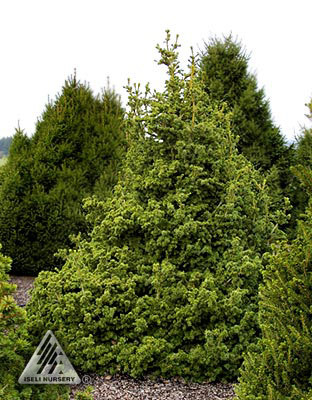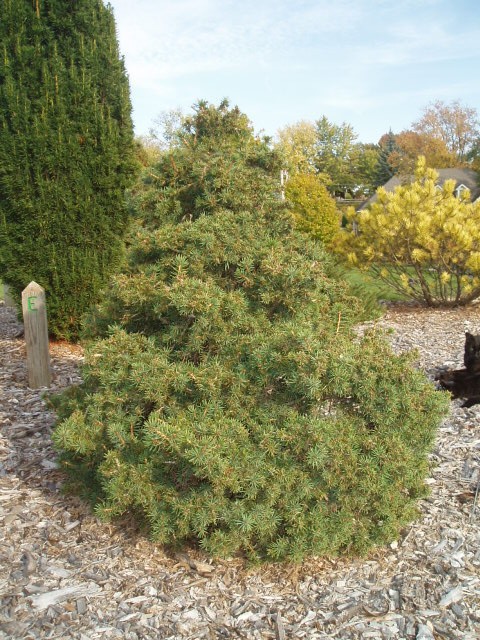
Picea abies 'Capitata' is an irregularly growing, broadly pyramidal, dwarf tree-form of Norway spruce with dense clumpy branching and occasional long, typical branching. Distinctive orange-brown buds grow clustered (capitating) at the branch ends. Attractive needles are glossy dark-green in color, exceptionally thick, and radially arranged about the stem. After 10 years of growth, a mature specimen will measure 20 to 28 inches (50 - 70 cm) tall and two-thirds as wide, an annual growth rate of 2 to 3 inches (5 - 7 cm).
This cultivar has been known to the nursery trade since the late 1800s. It's place of origin is Croux Nursery, Sceaux, France. It's clumpy, irregular form make it a conversation piece and a very collectable conifer for those in search of something unusual. In the Latin language "capitata" refers to the term, "capitating" or, "head forming," the concept of the bud clusters forming head-like structures on the terminal branch tips.


